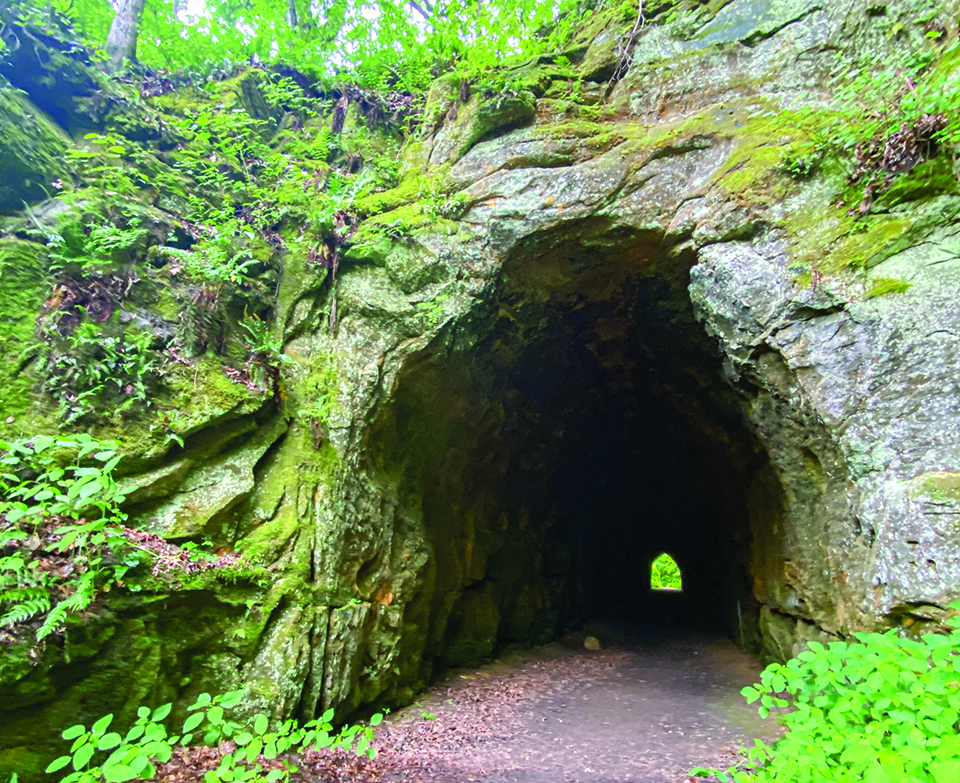Question: What is 2,000 years old, has eight sides and 18 holes?
Answer: The Octagon Earthworks, a portion of a larger complex known as the Newark Earthworks, a system of ancient earth mounds in Licking County, Ohio. Archeologists theorize that these mounds and earthen berms were an astronomical observatory, cemetery and ceremonial grounds for the area’s early inhabitants.
The Newark Earthworks originally encompassed about 4.5 square miles, but the growth of modern-day cities destroyed some portions. However, much did survive and today, the earthworks are a National Historic Landmark on the way to becoming a UNESCO World Heritage Site.
The portion of the site known as the Octagon Earthworks is marked by eight 550-foot-long earthen walls, from 5 feet to 6 feet high, and accounts for 6 million cubic feet of dirt. The entire Newark Earthworks crosses the boundaries of two central Ohio cities: Newark and Heath.

And those 18 holes?
They belong to the Moundbuilders Country Club Golf Course built on the Octagon Earthworks in 1911 when the land was owned by the local chamber of commerce. Since then, “the land (in the entire complex) has bounced around and has served many purposes,” explains Dick Shiels, professor emeritus of religion at the Newark Campus of Ohio State University and member of the Ohio History Connection, the state’s historical society that now owns the land.
Through the years, the earthworks served as parade grounds for the state militia, campgrounds for the Depression era’s Civilian Conservation Corps, a fairground, a motel and a racetrack.
Shiels is one of several who are working to get the world’s largest geometric earthworks listed as a World Heritage Site. No surprise that qualifications for such a designation do not include a golf course.
“I’ve been working on this designation since 2000,” Shiels says. “Right now, we are waiting for a decision from the Ohio Supreme Court to decide the fair market value of the golf course. The number is somewhere between $2 million and $22 million.”
Shiels and Newark native Bill Weaver, an avid local historian, retired educator and former caddy at the country club, explain all this on a June morning under threatening skies. From our observation tower adjacent to the golf course, we can see some of the extensive earthen berms, but it’s difficult to grasp just how huge the earthworks once were and still are. As of now, the public is allowed on the golf course to examine the landscape up close four times a year; otherwise, visitors are restricted to the observation towers.
Later, we visit Blackhand Gorge State Nature Preserve, and suddenly the sky makes good on its earlier threat. A soak-to-the-bone rain drives us to a primitive cabin where Weaver shows us specimens of flint, mined from Flint Ridge, six miles south of the gorge. This ridge, a nearly 8-mile-long vein of high-quality flint and 10 feet thick at its deepest spot, “was important to early inhabitants (14,000 years ago) because they had to eat,” Weaver says. “They used flint to fashion spear points and later, arrowheads.”
The rain eases somewhat so we decide to tackle the heavily forested, now-squishy Canal Lock Trail, so named because it follows alongside a portion of the long-gone Ohio & Erie Canal at Lock 16. Built in the early 1800s, this canal was modeled after the Erie Canal in New York. This trail also marks a former railroad line that carried goods and passengers from Columbus to Newark to Zanesville from 1902 to 1929. We continue as far as a 400-foot-long tunnel, cut through ebony-colored rock and still totally passable. The CN&Z was the only interurban railroad in Ohio to have a tunnel.
For more, visit Licking County and visit www.facebook.com/elouise.ondash.



